= Parodia leninghausii cv. albispina
Accepted Scientific Name: Parodia leninghausii
Kakteen Orch. Rundschau Kakteen Orch. Rundschau 7(4): 61. 1982 basionym cited as Pilosocereus leninghausii F. Haage = Pilocereus leninghausi~ F. Haage
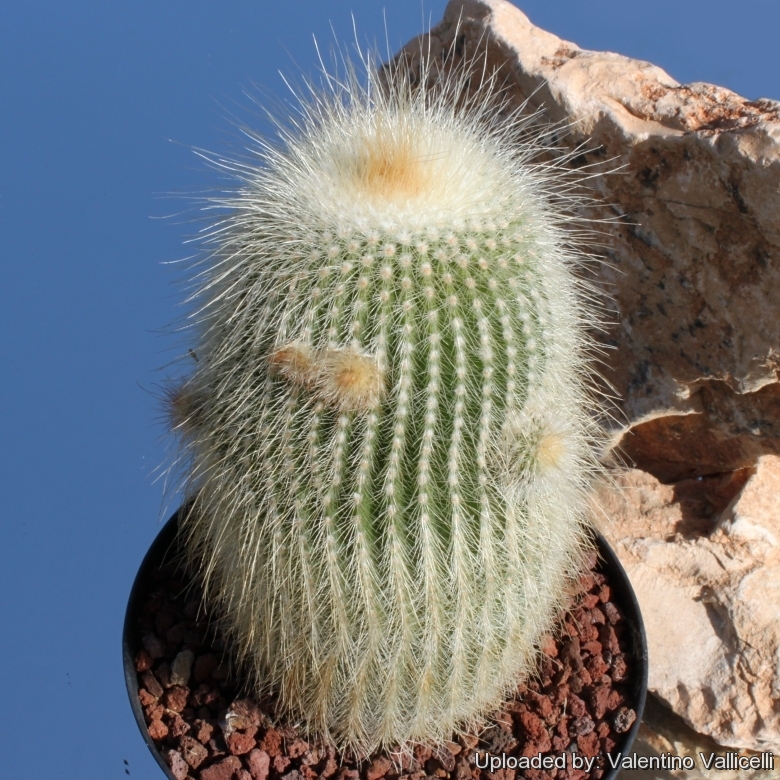
Notocactus leninghausii f. albispinus (Parodia leninghausii cv. albispina) Photo by: Valentino Vallicelli
This is the beautiful white spined form of the famous golden ball cactus.
Origin and Habitat: Garden origin (Nursery produced cultivar)
Habitat: The habitat where this plant come from can become very cold during the winter nights, often it will fall to just above freezing without harming the plants as it is also very dry.
Synonyms:
See all synonyms of Parodia leninghausii
back
Accepted name in llifle Database:Parodia leninghausii (K.Schum.) F.H.BrandtKakteen Orch. Rundschau Kakteen Orch. Rundschau 7(4): 61. 1982 basionym cited as Pilosocereus leninghausii F. Haage = Pilocereus leninghausi~ F. HaageSynonymy: 17
Cultivars
(4):
back
Description: Parodia leninghausiiSN|14697]]SN|14697]] cv. albispina best known in cultivation with its old name Notocactus leninghausiiSN|14702]]SN|14702]] var. albispinus is the white spined variant of Parodia leninghausiiSN|14697]]SN|14697]] distingushed from the latter by its harmless creamy-white spines and pale yellowish flowers. All the other characteristics are absolutely identical, namely size and form of stem, ribs, form size of flowers and fruit etc.
Habit: It is a columnar Cactus that branches and will start to cluster from the base as it ages.
Stem: At first globular then columnar up to 60(100) cm tall, 8-12 cm in diameter, with an angled crown.
Spines: Harmless, creamy-white and bristly.
Flowers: Near the top, 5-6 cm in diameter pale yellowish, silky, shining with a lovely reflection in the petals.
Blooming season: It blooms only when mature in Spring to late Summer. Blooms more than once a year.
Subspecies, varieties, forms and cultivars of plants belonging to the Parodia leninghausii group
Bibliography: Major references and further lectures
1) Tony Mace “Notocactus: a review of the genus incorporating Brasilicactus, Eriocactus and Wigginsia” Editorial Board/National Cactus & Succulent Society, 1975
2) Edward Anderson “The Cactus family” Timber Press, Incorporated, 2001
3) James Cullen, Sabina G. Knees, H. Suzanne Cubey "The European Garden Flora Flowering Plants: A Manual for the Identification of Plants Cultivated in Europe, Both Out-of-Doors and Under Glass" Cambridge University Press, 11/Aug/2011
4) David R Hunt; Nigel P Taylor; Graham Charles; International Cactaceae Systematics Group. "The New Cactus Lexicon" dh books, 2006
5) Walther Haage “Kakteen von A bis Z” Neumann Verlag, 1981
6)Larocca, J. & Machado, M. 2013. Parodia leninghausii. In: IUCN 2013. "IUCN Red List of Threatened Species." Version 2013.1. <www.iucnredlist.org>. Downloaded on 29 October 2013.
7) Urs Eggli, Andreas Hofacker: "Validation of the Name Parodia lenninghausii (Cactaceae), with a Note on the Lectotypification and Orthography of the Name". In: Novon. Volume 20, number 1, pages 30–32, 2010.
8) Urs Eggli, Leonard E. Newton: "Etymological Dictionary of Succulent Plant Names" Birkhäuser 2004
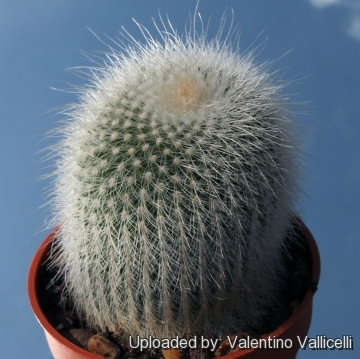 Notocactus leninghausii f. albispinus (Parodia leninghausii cv. albispina) Photo by: Valentino Vallicelli
Notocactus leninghausii f. albispinus (Parodia leninghausii cv. albispina) Photo by: Valentino Vallicelli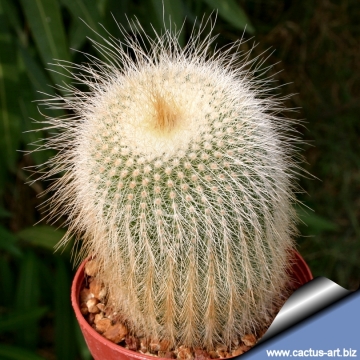 Notocactus leninghausii f. albispinus (Parodia leninghausii cv. albispina) Photo by: Cactus Art
Notocactus leninghausii f. albispinus (Parodia leninghausii cv. albispina) Photo by: Cactus Art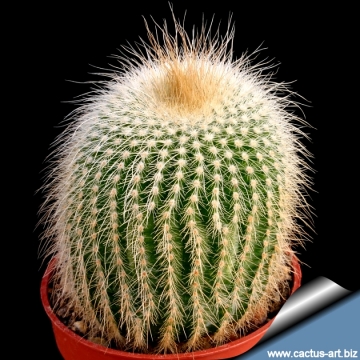 Notocactus leninghausii f. albispinus (Parodia leninghausii cv. albispina) Photo by: Cactus Art
Notocactus leninghausii f. albispinus (Parodia leninghausii cv. albispina) Photo by: Cactus Art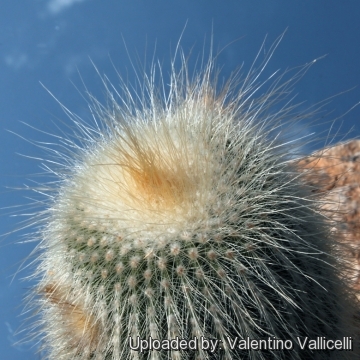 Notocactus leninghausii f. albispinus (Parodia leninghausii cv. albispina) Photo by: Valentino Vallicelli
Notocactus leninghausii f. albispinus (Parodia leninghausii cv. albispina) Photo by: Valentino Vallicelli Notocactus leninghausii f. albispinus (Parodia leninghausii cv. albispina) Photo by: Valentino Vallicelli
Notocactus leninghausii f. albispinus (Parodia leninghausii cv. albispina) Photo by: Valentino Vallicelli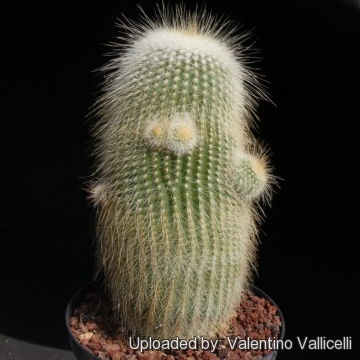 Notocactus leninghausii f. albispinus (Parodia leninghausii cv. albispina) Photo by: Valentino Vallicelli
Notocactus leninghausii f. albispinus (Parodia leninghausii cv. albispina) Photo by: Valentino VallicelliCultivation and Propagation: Frost Tolerant as low as -4°C (or possibly colder) but in cultivation it is best to avoid any frost when during the winter the temperature can go down to 2° C without any harm so long as the compost is very dry. During the summer it is best to keep the plants outside where the temperature can rise to over 30 C with no harm to the plant.
Allows good drainage and use a an open and free draining mineral compost that allows therefore roots to breath.
They like only a short winter's rest and should be kept almost completely dry during the winter months, If the soil is allowed to be dry for too long root loss could follow but equally the same result would occur if the plants are both wet and cold. From March onwards the plant will begin to grow and watering should be increased gradually until late May when the plant should be in full growth.
Water regularly during the summer so long as the plant pot is allowed to drain and not sit in a tray of water. During hot weather you may need to water the plants more frequently so long as the plant is actively growing. From late September watering should be reduced to force the plant to go in to a state of semi dormancy, by October you should be back in to the winter watering regime.
Need full sun avoiding only the harshest summer sun, if kept too dark they may become overly lush and could be prone to rotting due to over watering, they will also be shy to produce flowers.
Feeding may not be necessary at all if the compost is fresh then, feed in summer only if the plant hasn't been repotted recently. Do not feed the plants from September onwards as this can cause lush growth which can be fatal during the darker cold months.
Repotting should be done every other year or every three years, annual potting is not necessary. Do not be tempted to over pot as this will cause the unused compost to go stagnant and you may loose the plant.
Propagation: Seed sowing and cuttings.
















